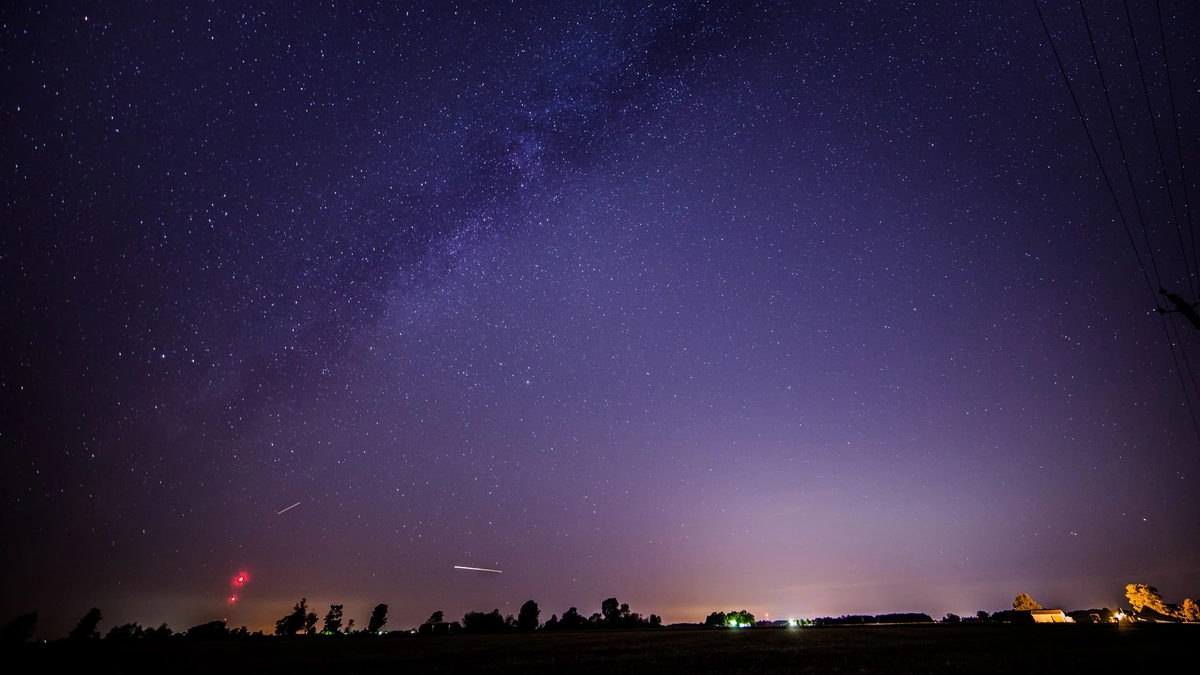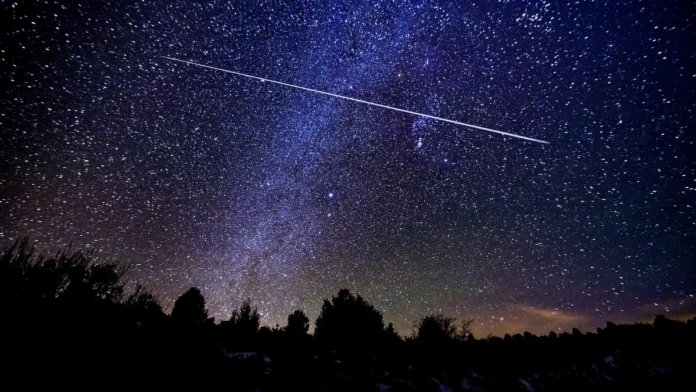Okay, folks, let’s talk about something truly spectacular that’s heading our way: the Draconid meteor shower . Forget your everyday shooting stars; this one has the potential to be a real showstopper. And the best part? October 2025 is shaping up to be prime time for viewing! But here’s the thing – it’s not just about knowing when to look up. It’s about understanding why this particular shower is worth braving a chilly October night for.
Think of it this way: most meteor showers are reliable, but predictable. The Draconids? They’re a bit like that quirky friend who might show up with a kazoo and a story about chasing squirrels, or they might just be fashionably late. The variability makes them fascinating, and understanding where that comes from is key to actually enjoying the show.
Why the Draconids are Unpredictable (and Awesome)

Most meteor showers are pretty consistent because they’re caused by Earth passing through a stream of debris left behind by a comet. Year after year, the Earth crosses the same path, resulting in a reliable shower. The Draconids , however, are caused by Comet 21P/Giacobini-Zinner. What fascinates me is that this comet has a relatively short orbital period, meaning it returns to the inner solar system fairly frequently. This, combined with the way the debris is ejected from the comet, leads to a stream that isn’t always evenly distributed.
Sometimes, we pass through a particularly dense patch of debris, leading to a meteor “outburst” – hundreds, even thousands, of meteors per hour! Other times, it’s a relatively quiet affair. Predicting these outbursts is tricky, but that’s part of the fun. What truly matters to understand is that knowing the history of this comet helps us understand the variance of meteor showers.
Prime Viewing Times for India
So, when should you mark your calendars? The Draconid meteor shower peak is typically around October 8th and 9th. But – and this is a big but – the exact timing can vary slightly. Here’s where experience comes in. The one thing you absolutely must do is check updated astronomical resources closer to the date. Factors like the moon’s phase can drastically affect visibility. A bright moon will wash out fainter meteors, making the show less impressive.
What fascinates me is the moon’s phase during the Draconids . I initially thought this was straightforward, but then I realized the importance of its phase. What’s really cool is that websites like Time and Date (https://www.timeanddate.com/) offer precise moon phase information for your location, allowing you to plan your viewing accordingly. If the moon is a thin crescent or new moon, you’re in luck! A fuller moon means you’ll need darker skies to see as many meteors.
Consider the geographical location. India’s vast landscape offers a variety of viewing locations. Escape the city lights! The darker your surroundings, the more meteors you’ll see. Rural areas, away from major cities, are ideal. What truly matters is finding a spot with an unobstructed view of the night sky. You don’t need fancy equipment – just your eyes and a comfortable place to lie down.
How to Prepare for Your Meteor-Watching Adventure
Okay, let’s get practical. Here’s the thing: meteor watching is a waiting game. You’ll want to be comfortable. Bring a blanket or sleeping bag to lie on, and dress warmly. October nights can get chilly, especially in northern India.
A common mistake I see people make is bringing binoculars or a telescope. While these are great for looking at planets and stars, they actually reduce your field of view, making it harder to spot meteors. Meteors streak across the sky, so you want to see as much of it as possible. Let me rephrase that for clarity: your naked eyes are your best tool for this celestial show.
Snacks and drinks are also a good idea. Pack a thermos of hot chai or coffee to keep you warm and alert. And don’t forget a friend! Meteor watching is always more fun with company. The shared experienceof witnessing a celestial event is something special.
Understanding the Radiant
Here’s where things get a little technical, but stick with me. The radiant of the Draconid meteor shower is in the constellation Draco the Dragon. This doesn’t mean you should only look at Draco, but it helps to know where the meteors appear to be coming from.
What fascinates me is that the radiant effect is simply a perspective trick. The meteors are all traveling in roughly parallel paths, but just like railroad tracks appear to converge in the distance, the meteor trails seem to originate from a single point. According to NASA (https://www.nasa.gov/), knowing the radiant can help you distinguish Draconid meteors from other sporadic meteors that might be visible that night.
Meteor showers usually involve particles. The Draconid shower is named after Draco. Let’s be honest, sometimes it’s hard to spot meteors during the Draconid meteor shower . It’s important to prepare for these activities.
The Deeper Meaning (Why Bother?)
So, why should you spend an evening staring at the sky? Beyond the sheer spectacle, meteor showers offer a connection to something much larger than ourselves. They’re a reminder of the vastness of space and our place within it.
The Draconid meteor shower , with its unpredictable nature, also teaches us about patience and the beauty of the unexpected. It’s a chance to disconnect from our screens and reconnect with the natural world. And who knows, you might just witness a meteor outburst that you’ll remember for the rest of your life. And, don’t forget to check the blood moon, it can be pretty.
FAQ About the Draconid Meteor Shower
What if the weather is cloudy?
Unfortunately, cloud cover will obscure your view. Check the weather forecast beforehand, and if it looks bad, consider trying again the following night.
What time of night is best to watch?
The best time to watch is usually after nightfall, as the radiant climbs higher in the sky.
What if I forgot my application number?
No need to worry about application numbers for meteor showers. Just bring a blanket and enjoy the show!
Do I need any special equipment?
No special equipment is needed. Your eyes are the best tool for meteor watching.
Can I take pictures of the meteors?
Photographing meteors can be challenging, but it’s possible with a DSLR camera, a wide-angle lens, and a tripod. Use a long exposure time to capture the faint streaks of light.
Ultimately, the Draconid meteor shower is more than just a celestial event; it’s an opportunity to experience awe, wonder, and a sense of connection to the cosmos. So, mark your calendars, find a dark spot, and prepare to be amazed. Just remember, the true magic lies not just in seeing the meteors, but in understanding their story and sharing that experience with others.

